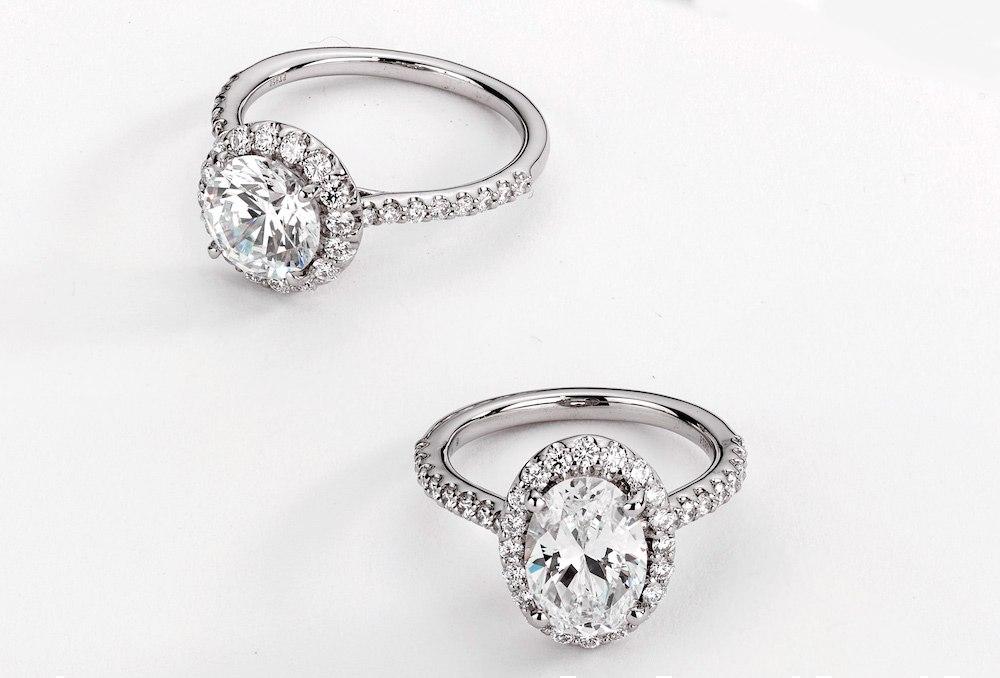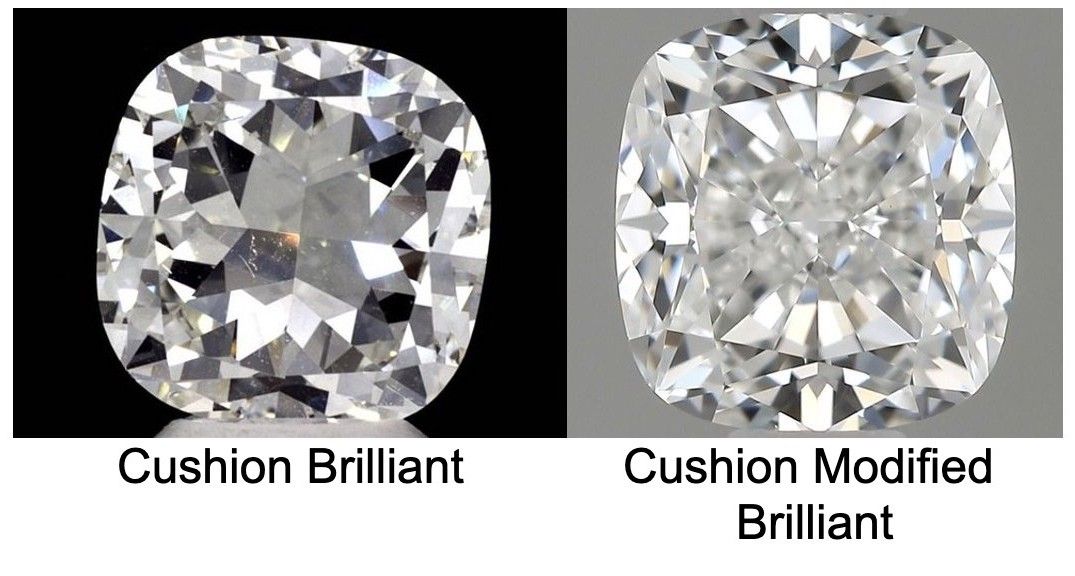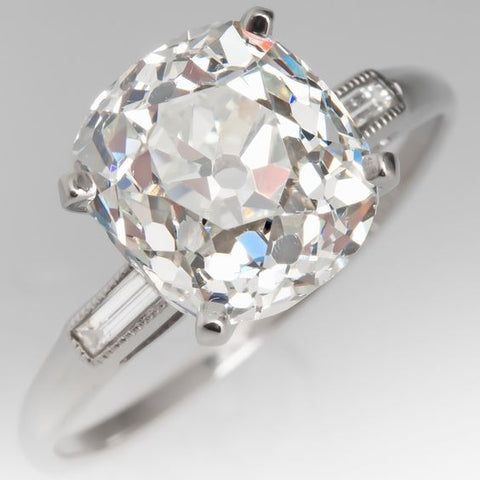Diamond FAQ: Lab-Grown Diamonds vs. Natural Diamonds

As you research diamonds, you may have seen information about lab-grown diamonds versus naturally formed diamonds. Some people may refer to lab-grown diamonds as “fake diamonds”, imitations or simulants, but this is incorrect. Lab-grown diamonds are chemically and physically the same as natural diamonds produced by the geological processes of Mother Nature. On the other hand, cubic zirconia and moissanite—which look similar to diamonds—have very different chemical and physical properties, and are known as simulant diamonds.
If you’re in the market for a diamond, we want you to be able to make the best decision based on ALL the facts — so we’re going to tell you all about the similarities and differences between nature-formed diamonds (aka “organic” diamonds or earth-grown diamonds), diamonds that were grown in a lab setting, as well as diamond simulants like cubic zirconia and moissanite. We hope after you read this, you’ll have the confidence that your happily-ever-after gem will last a lifetime–whether you decide on a Ritani diamond or not.
Let’s Start At The Beginning… How Are Diamonds Made?
The journey a diamond takes from growing within the earth to being bought as jewelry is long and complex. Without getting into all the specific science behind diamonds, the basic premise is that diamonds require very specific conditions to form and grow (kinda like your relationship!).
Diamond is the hardest, most stable form of pure carbon that occurs naturally (except Q-carbon, which scientists say might be found in certain planetary cores). Organic diamond forms when pure carbon undergoes super high temperature and pressure over billions of years within Earth’s mantle. It only forms in the “diamond stability zone”, 80 to 120 miles deep and extremely hot (up to 2,200 degrees Fahrenheit), where the conditions are just right. Then, over eons of violent volcanic eruptions, diamonds get brought to surface embedded in large chunks of rock.
Not all organic diamonds are created equal though. Differences in size, color and clarity are caused by trace minerals and other conditions that influence a diamond as it grows. For example, the vivid yellow hue in fancy yellow diamonds is caused by trace amounts of nitrogen mixed within the carbon structure.
What Is A Lab Grown Diamond?
Lab-created diamonds are grown in highly-controlled laboratory conditions that reproduce the Earth’s natural growing environment: high pressure and high temperature. These man-made diamonds have the same chemical composition, crystal structure, optical and physical properties as diamonds found in nature. They aren’t technically “synthetic diamonds” since their chemical composition is that of naturally occurring diamonds; and they usually exhibit the same fire, scintillation and sparkle as organic diamonds. Lab-grown diamonds are categorized as either high-pressure, high-temperature (HPHT) or chemical vapor deposition (CVD) diamonds, depending on the method of their production.
RELATED: CVD vs HPHT Diamonds: What's the Difference?
What’s The Real Difference Between Lab-Grown Diamonds and Natural Diamonds?
Just like no two couples are alike, no two diamonds are alike. This is true for both lab-grown diamonds and organic diamonds. When considering the differences and similarities between lab-created diamonds and nature-grown diamonds, you won’t find many that are visible to the unaided eye, unless you’re actually a gemologist. The only difference between lab-grown diamonds and natural diamonds is their origins.
module
Do Lab-Grown Diamonds Have Flaws?
Nearly all diamonds, organic and lab-created alike, have inclusions that affect their clarity. Every certified diamond gets assigned a clarity grade.
Colors Of Organic Diamonds vs Lab-Created Diamonds
Lab-grown diamonds are grown in white, yellow, blue, pink and green and are typically found with color grades ranging from D to K. Organic diamonds occur in every imaginable color with an infinite number of hues, tonality and saturation levels. Color comes from impurities (such as nitrogen molecules) that become trapped inside the diamond lattice as it grows. Different types of trace chemicals in the pure carbon cause different colors and saturation levels; the most common diamonds are the classic “white” category, and rarer types include fancy yellow, pink and vivid blue.
How Long Does It Take To “Grow” A Diamond?
When comparing lab-grown versus nature-grown diamonds, it’s fascinating to consider the differences in time spent “growing” diamonds. Part of what makes diamonds alluring to people is their history.
The time it takes to create a lab-grown diamond depends on its size. Lab-grown diamonds can take approximately 6 to 10 weeks to develop in a laboratory.
Diamonds close enough to the earth’s surface to be mined today were formed in nature between 1 billion to 3.3 billion years ago. This alone is one reason why they’re so valuable — they’re artifacts from before the dawn of the human race. Think about the symbolism behind that and how many years they’ve been around — a pretty intense symbol to grace an engagement ring, a pair of earrings or a necklace.
Another interesting difference is the carat weight ranges of lab-created versus organic diamonds. Lab-grown diamonds can now grow up to 100 carats, while some of the largest pieces of rough organic diamond are upwards of 400 carats. For most consumers, diamonds that big are just a bit outside budget, but it’s still fascinating to see some of the monster diamonds nature produces.
Are Lab-Created Diamonds A Better Value?
Lab diamonds can cost 30-50% less than natural diamonds of comparable size and quality. Considering that a lot more work and natural resources go into delivering that organic diamond to your doorstep than the lab-created one, it’s not all that surprising.
One of the most important differentiators between a lab-grown diamond and an organic diamond: lab-grown diamonds have little resale value. Organic diamonds, on the other hand, typically retain value and can be sold years later if you so desire.
What About “Diamond Alternatives” Like Moissanite and Cubic Zirconia?
Natural Moissanite originally comes from space–created by a meteorite that fell to Earth. These crystals are composed of silicon carbide. Natural moissanite is incredibly rare, so moissanite available for purchase today is laboratory-created. Lab-created Moissanite is engineered to look similar to diamonds, but is physically quite different from a true diamond.
Cubic Zirconia (also known as CZ) was first created in 1976 in a lab for its low cost, durability, and sparkle similar to a diamond. Cubic zirconia is a synthesized (man-made) crystalline diamond simulant mineral that is colorless, hard, and flawless.
These simulants are not made of carbon crystals like diamonds are. Simulants sell at much lower prices than diamonds (lab created or organic).
If you’re not sure whether a gem is a real diamond or a fake “diamond simulant”, use one of these 7 tricks for spotting a fake diamond.
Bottom Line: Do What Feels Right For You
Nature-formed, organic diamonds and lab-created diamonds are chemically exactly the same. Whatever type of diamond you decide to purchase, we recommend seeing it in person before you buy — and picking the gem that speaks to you personally.
Learn more in our Ultimate Buying Guide and explore the 4 C's of Diamonds.
Learn more about Lab-Grown Diamonds and Earth-Grown Diamonds here:


